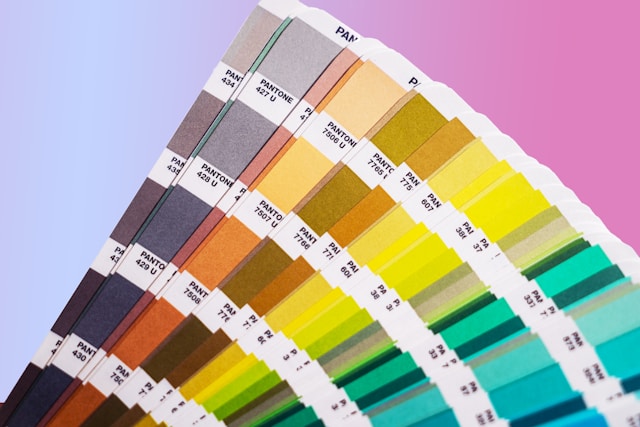How To Achieve a 20% Reduction in Construction Costs Through More Efficient Source Procurement
Mar 06, 2025
Project Management and Construction Best Practices

1. Supplier Collabroations and Bulk Purchasing
Why It Works: Establishing long lasting relationships with suppliers allows them to offer discounted building materials, priority service, and flexible payment terms. In addition, bulk purchasing for contractors reduces the per unit cost, making material procurement more efficient.
Actionable Steps: Commit to purchasing volume with suppliers to negotiate discounts, which is a key supplier negotiation strategy.
Form a preferred vendor program for potential long term cost savings.
Seek out cost effective construction materials that can be consistently sourced through reliable vendors.
2. Purchasing New Digital Procurement Platforms
Why It Works: Construction procurement platforms eliminate manual errors and simplify the purchasing process while providing access to vendor price comparison from multiple suppliers. Implementing procurement software for builders helps streamline orders, track inventory, and manage supplier performance efficiently.
Actionable Steps: Utilize online material sourcing platforms like MawadOnline to compare prices and secure the best deals.
Integrate construction supply chain automation to improve procurement accuracy and efficiency.
Implement software capable of monitoring order history, procurement strategy performance, and pricing trends.
3. Just in Time (JIT) Inventory Management
Why It Works: Such strategies are best performed by JIT in construction because it reduces storage costs and material loss. This helps in promoting superior drills in inventory control and makes sure that construction waste minimization is more effective.
Actionable Steps: To reduce waste elimination costs, deliverables should be brought in along with the supplier on project dates.
Overstock avoidance as well as exact material requisitioning will be achieved through predictive analytics targeting procurement.
Timely delivery of materials can be secured through live tracking of shipments.
Why It Works: Standardization of construction materials Minimizes Construction Costs and Simplifies Procurements as a Single Bulk Order Rather than Many Smaller Orders: Furthermore, standardizing construction materials allows contractors to save money.
Actionable Steps: The list of effective construction designs determined through this approach will benefit Accuracy, Speed and Simplicity Over Expense Of The Building Process.
Develop criteria of cost effective building systems that lead to consistency across all projects.
Streamlined procurement of long term savings will require instruction to project managers.
5. Local Suppliers
Why It Works: Sourcing from local construction materials suppliers reduces transportation costs and ensures quicker delivery. This approach aligns with sustainable material sourcing and supports local economies while ensuring minimizing transportation costs.
Actionable Steps: Identify and build relationships with local vendor partnerships to reduce supply chain disruptions.
Consider the total cost of ownership (TCO) rather than just the upfront purchase price when negotiating.
Look for eco friendly construction procurement options available in your region.
6. Reducing Wate While Increasing Reuse of Materials
Why It Works: Implementing a strong construction site waste management plan helps reduce unnecessary expenses while enhancing sustainability. Reusing and recycling building materials is a cost effective way to cut expenses.
What To Do: Develop an integrated construction waste reduction system for projects.
Encourage workers to make the most of available materials and reduce scrap waste.
Salvage and reuse items like formwork, extra steel, and wood to increase cost saving waste reduction efforts.
7. Using other, More Sustainable Resources or Possibilities
How To Make It Work: Incorporating green building materials such as recycled concrete for construction and engineered wood for building reduces environmental impact while keeping costs under control.
Useful Tips: Explore sustainable construction resources that offer durability at a lower cost.
Consider affordable prefabrication techniques that allow for better quality control and cost efficiency.
Collaborate with architects and engineers to design cost efficient, sustainable structures.
Final Thoughts
By adopting these construction procurement efficiency techniques, companies can achieve lowering construction costs effectively, often reaching savings of 20% or more. Using best construction sourcing tools, embracing smart procurement strategies, and reducing waste will drive financial efficiency without sacrificing quality.
Start Saving Your Costs Immediately
Experience savings on your next project by implementing these strategies. Looking for easier ways to source materials? Check out leading construction platforms and sourcing tools built for builders.
Recent Posts
How To Achieve a 20% Reduction in Construction Costs Through More Efficient Source Procurement
Mar 06, 2025
Project Management and Construction Best Practices
Managing Customer Expectations: Enhancing Trust in Online Color Selection
Nov 01, 2024
Project Management and Construction Best Practices
Solutions for Overcoming Online Color Matching Challenges
Oct 31, 2024
Project Management and Construction Best Practices
The Impact of Screen Technology on Color Perception
Oct 30, 2024
Project Management and Construction Best Practices
Understanding the Color Matching Dilemma
Oct 29, 2024
Project Management and Construction Best Practices
Overcoming Colour Matching Challenges in the Digital Age: Insights for Architects and Interior Designers
Oct 29, 2024
Project Management and Construction Best Practices
4 Reasons Why Construction Service Providers Should Join an Online Marketplace
Oct 29, 2024
Technology & Innovation
Top 6 Reasons Construction Material Manufacturers Should Join an Online Marketplace
Oct 29, 2024
Technology & Innovation








